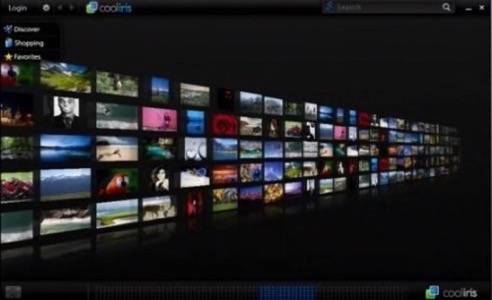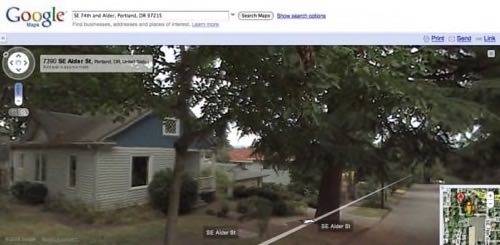Whether it’s with your family, your co-workers or your clients – many of us like to share the excitement we have about the new, social web with others. What do you show other people to demonstrate how powerful, and yet easy to use, this new world of technology really is?

We asked our staff and a number of other advanced social web users what the one thing is that they like most to show people who are less experienced with the web than they are. Some of our favorite responses are below, maybe they’ll give you some fresh ideas about how to have that big conversation with the people in your life – maybe some of them will even be new for you.
We think this is more than just fun to talk about. We think those moments of sharing and discovery of the best basic new apps offer lessons to learn about contemporary human psychology.
The Big Picture

Most of the people we talked to said they showed their friends and family something that falls into one of three categories: syndication, visualization or music. We agree that these are great approaches for turning people on to the new web.
There were a number of people who said that showing people how to use browser tabs made a big difference. (This author has a hard time comprehending that, to be honest.) Communications consultant Jordan Guthman says he likes to show people Google’s “advanced search” and in particular the option to limit searches to content posted within the last 24 hours. (I must admit that’s a new one to me!) That probably helps illustrate that the new web is always fresh and changing.
Betsy Weber works at TechSmith, makers of screen casting programs Camtasia and Jing, tools people use to share new things about the web with each other every day. Betsy says she likes to show people Firefox Mouse Gestures. Macbook Pro owners should check out the similar multi-touch command app MultiClutch. Both of these are big time savers, helping users navigate quickly through the expansive web.
Useful: Syndication
Syndication and RSS are life changing stuff, so we weren’t surprised to that many people we talked to said that some variation of RSS is the first thing they show people.
Google Alerts are very popular but they aren’t the only way to introduce people to the subscribable web. (This season’s newest addition to the service – RSS feeds for Google Alerts, is pretty cool though.)
Using RSS feeds helps users move beyond stumbling through a handful of websites, caught unaware of emerging information unless by chance visits to sites. It puts us in command of a personalized information flow, increased in timeliness and breadth by orders of magnitude over our old browsing habits.
PR pro Mike Maney says he starts with an RSS reader (specifically, NetNewsWire from Newsgator) because it’s “amazing watching people immediately grok the power of the web coming to them.” We’ve found too that simply showing people a filled-up RSS reader turns on light bulbs immediately. Talking about the idea, not so much.
Josh Bancroft checks out cool new things and then shows them to other people for a living, at Intel. He likes to start people out with the Common Craft video RSS in Plain English. We like that video a lot, too.
iGoogle is another popular way to show off syndication technology and it comes with the convenience and brand familiarity of Google. Netvibes, possibly the easiest “start page” to customize, is also a favorite to show new users.
SocialText’s Schott Schnaars says he pointed his family to FriendFeed, where they can find all of his activity syndicated in one place. That makes a lot of sense to us, though we suspect that a separate lifestreaming account might best keep family from being overwhelmed by too much work-related information they aren’t interested in.
Marshall’s Pick
What do I like to show people to turn them on to syndication? I generally show them Netvibes or iGoogle but after that, I like to show them how to find feeds to fill those pages up with. There’s no better way to do that than with Yahoo’s social bookmarking service Delicious. Specifically, I like to show them links like http://delicious.com/tag/TopicOfInterest+blog. Check out the most popular links there and you’ll find some of the best blogs on whatever your topic of interest is. We discussed this and similar strategies in a post here titled Comparing Six Ways to Find Top Blogs in Any Niche.
Show people how to find and subscribe to the top blogs on topics they are interested in and most people will be quickly engaged. It’s really useful – far more useful than platitudes about “joining the conversation.” Most people don’t know where to look to find the conversation. Show them and they get really excited.
Fun: Visualization and Music
Reading blogs and feeds may be good for work but work alone can sustain no one. Nor can it sustain most peoples’ interest in all the new things going on online.
A number of people that we asked said that Google Maps, Earth and Streetview were their favorite things to show new users. Those certainly make a big impression. That’s especially true with the new redesign of Google Maps and Streetview. For the sheer power of Google’s view of the globe to be compacted down into my little browser is truly awe inspiring.

Looking at images of our world and the streets we live on isn’t the only visualization that’s easy to get excited about, though. Hardware blogger Mari Silbey says she shows people image browser CoolIris. That’s fast becoming a very popular browser extension.
None of those visualization tools offer quite the feeling of teeming humanity that journalist Craig McGinty’s favorite, TwitterVision, does. This world map of real time Twitter messages immediately communicates that there are everyday people all around the world communicating with new online tools, all day long. It’s quite compelling.

While you’re perusing all this imagery, why not listen to some music in the background? A number of people we asked said that they liked to show people music recommendation sites Pandora and Last.fm or MP3 blog aggregator Hype Machine.
Showing people not just free and legal music online, but free and legal music where the discovery is powered by algorithms, network effects and economies of scale – that’s an exciting experience for almost anyone. It still excites me every time I visit these sites and think about what’s going on.
Perspective: History
All of these tools and toys that we show people to share our excitement about the new web deserve some amount of criticism, as well, for a balanced perspective. The wisdom of the crowd may not be the best way to have your editorial decisions made in music, news or other content. Google’s omniscience warrants some serious skepticism. RSS increases information consumption but may very well cost us contemplation.
We believe that these tools are still worth using, though. When used well, they give us super-powers as information workers. Those powers can be used for good.
There was a time in history when access to knowledge came in the form of monthly rides on a horse into the local town where the library was located. Those times had their up-sides, but our relationship to this kind of knowledge about the world was not one of them.
None the less, life before Web 2.0, life before the internet, certainly had a lot to offer. The Digital Divide not withstanding, we who live in many parts of the world will find ourselves, relatively soon, with no one in our lives who remembers what the world was like before the internet. That will be a significant loss for our collective knowledge.
Perhaps talking to people who do not live in the web, showing them what we’re excited about, can be a learning experience for us as well as for them.
What about you? What do you like to show people first who are unfamiliar with all of this? Let us know in comments; those wonder-filled moments of discovery are fun to think about. Perhaps it’s the memory of that high that keeps so many of us tuned in to all the new applications that launch every day – the hope that we will find “another RSS,” another Pandora/Last.fm, another game changer that we couldn’t even imagine before it came into our lives.





















